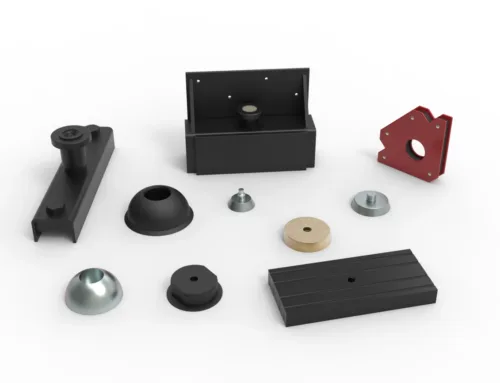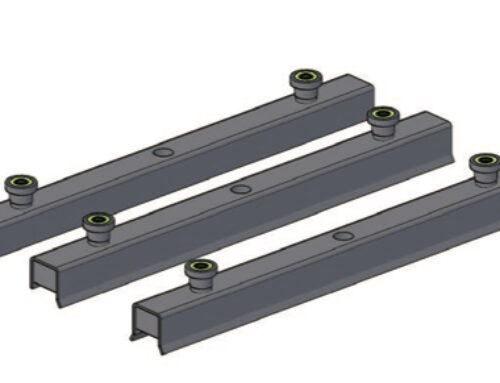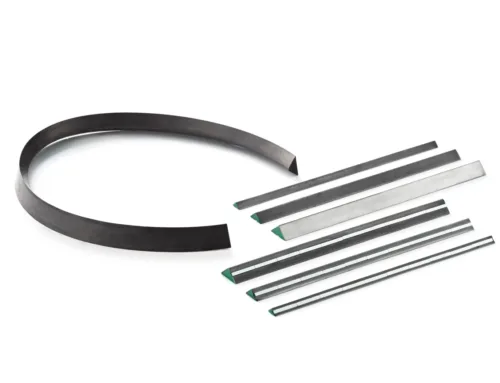If you’ve ever wondered how magnetic compasses and navigation systems keep us on track—especially in a world dominated by GPS—you’re in the right place. Whether you’re a maritime pro, an outdoor adventurer, or a tech enthusiast, understanding the fundamentals and latest innovations in magnetic compass technology is key to navigating confidently and accurately.
In this article, we’ll break down how magnetic compasses work, explore their role within modern navigation systems, and highlight cutting-edge advancements that keep these classic tools relevant today. Plus, we’ll share how NBAEM’s expertise in advanced magnetic materials is driving performance and precision to the next level.
Ready to dive into the world of magnetic compass technology? Let’s get started!
Understanding Magnetic Compasses
A magnetic compass works by aligning its magnetized needle with Earth’s magnetic field, pointing toward magnetic north. This principle has guided explorers, sailors, and travelers for centuries, offering a simple yet reliable navigation tool. The needle’s movement results from the interaction between the permanent magnet inside and the planet’s magnetic lines of force.
Types of Magnetic Compasses
Magnetic compasses come in several designs, each suited for different applications:
- Magnetic needle compasses – The classic style, using a free-spinning magnetized needle on a pivot.
- Liquid-filled compasses – Contain fluid to stabilize the needle, improving readability in rough conditions.
- Fluxgate compasses – Use magnetic sensors and electronics to detect magnetic field direction, offering higher precision for aviation, marine, and military use.
Key Components and Materials
A typical magnetic compass has a magnetized needle or card, a pivot or jeweled bearing for smooth movement, a housing for protection, and in some cases, damping fluid. The choice of magnetic materials—such as certain ferromagnetic alloys—directly affects accuracy and lifespan. For more on different magnetic materials and their properties, see type of magnetic materials.
Influence of Magnetic Properties on Accuracy and Durability
Magnetic strength, stability, and resistance to demagnetization are critical. High-coercivity materials help maintain reliable performance over time, while corrosion-resistant metals extend durability in marine or outdoor environments. Any change in magnetic properties—whether from temperature shifts, impact, or exposure to strong magnetic interference—can cause compass deviation and reduce accuracy.
Magnetic compasses have guided travelers for centuries, from sailors crossing the Atlantic to hikers in the mountains. In traditional navigation, they were the go-to tool to determine direction without relying on the sun or stars. They provided a reliable reference point, especially when weather or visibility made other methods useless.
Today, modern navigation systems still use magnetic compasses—just in more advanced ways. Boats and ships rely on them as backups to electronic charts. Pilots in small aircraft keep them as standard cockpit instruments in case of electrical failure. Hikers and outdoor adventurers still carry them because they work where GPS signals fade, like deep forests or remote canyons.
In many cases, we see hybrid navigation systems that combine magnetic compasses with electronic sensors, GPS, and inertial navigation. This mix gives users real-time direction while correcting drift and signal loss. For example, marine navigation tools may use both a fluxgate compass and GPS, while drones rely on magnetic modules plus onboard positioning software.
Advantages of magnetic compasses compared to satellite-based systems include:
- Don’t rely on battery power or external signals
- Work in areas with no GPS coverage
- Resistant to weather conditions that may affect electronics
That said, they’re not perfect. Limitations and challenges come from magnetic interference—anything from metal structures to electronic devices can throw off readings. Regular calibration is also crucial, especially in environments with lots of steel or electrical equipment. Factors like local magnetic anomalies can make accuracy a challenge, which is why many pros pair them with other navigation tools.
Technological Innovations and Trends in Magnetic Compasses
Over the past few years, magnetic compass technology has come a long way, driven by better materials, smarter electronics, and new applications. In the U.S., these updates are shaping how navigation systems work across industries like marine, aviation, defense, and even outdoor sports.
Advances in Magnetic Materials
New high-performance magnetic materials are boosting compass accuracy, reducing wear, and performing better in extreme conditions. These improved alloys help reduce magnetic drift and resist interference from nearby electronics—something that’s especially important on modern ships and aircraft.
Digital Magnetic Compasses and Electronic Compass Modules
Digital magnetic compasses convert magnetic data into electronic signals for real-time navigation. These electronic compass modules are smaller, more precise, and easier to integrate into devices like smartphones, marine autopilots, and aviation dashboards. They often include built-in calibration and tilt compensation for consistent readings, even on the move.
Use in Unmanned Vehicles and Drones
From autonomous underwater vehicles to aerial drones, magnetic compasses act as a reliable fallback when GPS is unavailable or jammed. Many unmanned systems pair a compass with an inertial navigation system to keep accurate heading data in challenging environments.
We’re seeing more AI-enhanced navigation systems, where magnetic data is combined with GPS, vision sensors, and environmental inputs for smarter route decisions. Magnetic sensing technology is also evolving, allowing devices to detect and adapt to local magnetic variations automatically, cutting down on manual calibration.
These innovations ensure magnetic compasses remain a key part of navigation—whether on a fishing boat off the Florida coast, a drone mapping farmland in Iowa, or a robot navigating a warehouse in Texas.
Applications Across Industries
Magnetic compasses play a role in more than just hiking trips — they’re still widely used across different industries in the United States. Even with all the advances in GPS and digital navigation, their reliability without external power makes them a steady backup and primary tool in many fields.
On ships and boats, a magnetic compass is a must-have. Mariners use them as a primary steering aid and as a backup when electronic navigation systems fail. They’re reliable, simple, and unaffected by satellite issues, which is critical in open waters or near coastlines.
Aviation Industry
In aviation, both small aircraft and commercial planes carry magnetic compasses. They work as a backup reference when electronic systems are down or when flying in areas with poor GNSS coverage. Pilots still train on using them to maintain heading control.
Outdoor and Adventure Sports
Hikers, hunters, kayakers, and campers often keep a magnetic compass in their gear. It doesn’t matter if it’s cloudy, dark, or if devices lose signal — a well-calibrated compass helps pinpoint direction instantly.
Automotive and Robotics
Some vehicles and unmanned robots, especially those operating in remote or underground environments, rely on integrated magnetic sensors. These help navigation systems maintain direction when GPS isn’t available, such as in tunnels, dense forests, or disaster zones.
For the military, magnetic compasses remain essential. They provide direction even in GPS-denied environments caused by jamming or signal loss. Ground troops, naval fleets, and even certain aircraft still depend on them for mission-critical navigation.
NBAEM’s Role in Magnetic Compass Technology
NBAEM supplies high-grade magnetic materials that are key to building accurate, durable magnetic compasses. Their range includes advanced alloys and rare-earth magnets designed to perform consistently in different environments—whether at sea, in the air, or on land.
They work closely with compass manufacturers and system integrators to deliver customized magnetic solutions. This means adjusting material grades, shapes, and magnetic strength to match specific navigation system requirements, from traditional handheld compasses to advanced fluxgate compass modules used in hybrid navigation setups.
NBAEM has partnered with marine navigation equipment makers, aviation instrument suppliers, and outdoor gear brands in the U.S. to improve compass accuracy and reliability. In one project with a U.S.-based outdoor equipment company, they provided corrosion-resistant magnetic alloys that maintained consistent performance in saltwater conditions—a big win for coastal and offshore navigators.
Their approach focuses on quality, innovation, and sustainability. Every magnetic material is tested for long-term stability, resistance to magnetic interference, and environmental durability. At the same time, they are exploring eco-friendly production methods and recyclable materials to meet rising industry and consumer expectations.
Choosing the Right Magnetic Compass for Your Needs
When picking a magnetic compass, it’s important to match it to how and where you’ll use it. Whether it’s for marine navigation, hiking in remote areas, or integrating into a vehicle or drone system, the right choice comes down to a few key factors.
Factors to Consider
- Accuracy – Look for compasses designed to handle the magnetic variations in your region. High precision is vital for applications like aviation or surveying.
- Materials – Quality magnetic materials improve durability and reduce drift. Corrosion-resistant components are a must for marine and outdoor use.
- Environmental Conditions – Extreme temperatures, vibration, or water exposure can affect performance. Choose a model built for your operating environment.
- Size and Weight – Compact designs are ideal for handheld or drone use, while larger models work well for ships and aircraft.
- Integration Capability – If you’re pairing your compass with GPS, inertial navigation, or other sensors, check that it supports your system’s requirements.
Maintenance and Calibration Tips
- Keep your compass away from strong magnets or electronic interference.
- Clean and dry it after exposure to saltwater or dirt.
- Follow the manufacturer’s calibration steps regularly, especially after traveling long distances or crossing into new magnetic zones.
- Store in a stable, moderate environment to avoid magnet degradation.
How NBAEM Supports Your Selection
As a trusted magnetic material supplier, NBAEM works closely with compass manufacturers and system integrators in the U.S. We help select and engineer magnetic materials that enhance accuracy, temperature stability, and long-term reliability. Clients can request custom specifications based on application needs, whether for handheld outdoor compasses, marine navigation systems, or advanced hybrid navigation devices. NBAEM’s expertise ensures every compass is built on a solid magnetic foundation.
FAQ Section
How does a magnetic compass work
A magnetic compass uses a magnetized needle that lines up with the Earth’s magnetic field. The needle points toward magnetic north, giving you a fixed reference point for direction. Whether it’s a basic hiking compass or an advanced electronic module, the core principle stays the same.
Can magnetic compasses replace GPS
Not really. A magnetic compass works anywhere on Earth without batteries or a signal, but it can’t give you exact coordinates or mapping. GPS does that, but it needs satellite connection. Many pros—especially in marine, aviation, and outdoor use—carry both for backup.
What causes compass errors and how to fix them
Most compass errors come from:
- Magnetic interference from electronics, vehicles, or power lines
- Nearby metal objects changing needle alignment
- Poor calibration in digital or fluxgate compasses
Fixes include keeping the compass away from strong magnetic sources, re-calibrating periodically, and using non-magnetic mounts when installing in vehicles or boats.
What materials improve compass performance
High-quality magnetic alloys like AlNiCo, samarium cobalt, or neodymium can make the needle more stable and durable. Using corrosion-resistant housings and low-friction pivots also boosts accuracy and lifespan—especially in marine or outdoor environments.
How does NBAEM support compass manufacturers
NBAEM supplies precision magnetic materials and custom-engineered components to help compass manufacturers improve accuracy, durability, and resistance to interference. They work with system integrators in marine, aviation, automotive, and defense industries—offering tailored magnetic solutions, testing support, and fast turnaround for U.S. buyers.





Leave A Comment